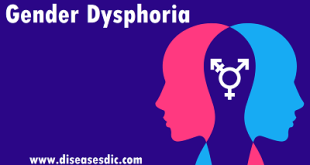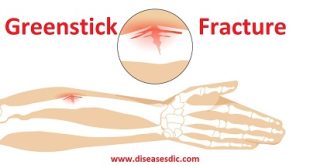Definition
Glucagonoma is a rare tumor involving the pancreas. Glucagon is a hormone produced by the pancreas that works with insulin to control the amount of sugar in your blood. Glucagonoma tumor cells produce large amounts of glucagon, and these high levels create severe, painful, and life-threatening symptoms.
History
Fewer than 251 cases of glucagonoma have been described in the literature since their first description by Becker in 1942. Because of its rarity (fewer than one in 20 million worldwide), long-term survival rates are as yet unknown.
Epidemiology
Glucagonomas are rare tumors (third in frequency, after insulinomas and gastrinomas among functional pancreatic endocrine tumors) with an estimated incidence of only 1 in 20 million20 or 0.05-1 new cases/ million/year. Until 1998, 407 cases had been reported worldwide. These tumors may occur either sporadically (87%) or as part of multiple endocrine neoplasia syndrome type 1 (MEN 1) (13%).22-24 The patients of this latter group initially present with other features, such as hyperparathyroidism, and the age at diagnosis is usually below 40 years
Risk factors
Risk factors of glucagonoma include the following:
- Extreme thirst
- Diarrhoea
- Need to urinate frequently (including at night)
- Increased appetite
- Inflammation of mouth or tongue
- Rash to skin on face, buttocks, lower limbs that frequently moves
- Crusty or scaly skin
- Raised sores
- Unintentional loss of weight
Causes
- Glucagonoma is usually cancerous (malignant). The cancer tends to spread and get worse.
- This cancer affects the islet cells of the pancreas. As a result, the islet cells produce too much of the hormone glucagon.
- The cause is unknown. Genetic factors play a role in some cases. A family history of the syndrome multiple endocrine neoplasia type I (MEN I) is a risk factor.
Symptoms of Glucagonoma
If you have a tumor that produces large quantities of glucagon, it will affect many aspects of your health. Glucagon balances the effects of insulin by regulating the amount of sugar in your blood. If you have too much glucagon, your cells don’t store sugar and instead sugar stays in your bloodstream.
Glucagonoma leads to diabetes-like symptoms and other painful and dangerous symptoms, including:
- High blood sugar
- Excessive thirst and hunger due to high blood sugar
- Frequently waking up at night to urinate
- Diarrhoea
- A skin rash, or dermatitis, on the face, belly, buttocks, and feet that’s often crusty or filled with pus
- Unintentional weight loss
- Blood clots in the legs, which is also called deep vein thrombosis
Glucanoma symptoms
Complications of Glucagonoma
Excess glucagon leads to diabetes-like symptoms. High blood sugar can cause:
- nerve damage
- blindness
- metabolic problems
- brain damage
- Deep vein thrombosis can cause blood clots to travel to the lungs, and it can even cause death.
- If the tumor invades the liver, it can eventually cause liver failure.
Diagnosis and test
- It can be difficult to diagnose glucagonoma. Often, the symptoms appear to be caused by another condition, and it may be years before the correct diagnosis is made.
- Diagnosis is initially made with several blood tests. High glucagon levels are the hallmark of this condition. Other signs include high blood sugar, high levels of chromogranin A, which is a protein often found in carcinoid tumors, and anemia, which is a condition in which you have a low level of red blood cells.
- Your doctor will follow up these tests with a CT scan of the abdomen to look for the presence of tumors.
- Two-thirds of all glucagonomas are malignant. These tumors can spread throughout the body and invade other organs. Tumors are often large and can be 4 to 6 centimeters wide when they’re discovered. This cancer is often not discovered until it has spread to the liver.
Treatment and medications
- Treating glucagonoma involves removing tumor cells and treating the effects of an excess of glucagon on your body.
- It’s best to begin treatment by stabilizing the effects of excess glucagon. This often involves taking a somatostatin analog drug, such as an injection of octreotide (Sandostatin). Octreotide helps to counteract the effects of glucagon on your skin and improve skin rash.
- If you’ve lost a great deal of weight, you may need an IV to help restore your body weight. High blood sugar can be treated with insulin and close monitoring of your blood glucose levels.
- You may also be given an anticoagulant medication, or blood thinner. This prevents the formation of blood clots in your legs, also known as deep vein thrombosis. For people at risk of deep vein thrombosis, a filter can be placed in one of your large veins, the inferior vena cava, to prevent clots from reaching your lungs.
- Once you’re healthy enough, the tumor will likely be surgically removed. This type of tumor rarely responds well to chemotherapy. Surgery is most successful if the tumor is caught while it’s still confined to the pancreas.
- Exploratory surgery of the abdomen may be done either laparoscopically, with small cuts to allow for cameras, lights, and tools, or by creating a larger open incision.
Prevention of Glucagonoma
- Currently there are no definitive methods available to prevent Glucagonoma Syndrome
- Individuals who have a family history of multiple neuroendocrine neoplasia type 1 may benefit from genetic counselling
- Active research is currently being performed to explore the possibilities for treatment and prevention of inherited and acquired genetic disorders
 Diseases Treatments Dictionary This is complete solution to read all diseases treatments Which covers Prevention, Causes, Symptoms, Medical Terms, Drugs, Prescription, Natural Remedies with cures and Treatments. Most of the common diseases were listed in names, split with categories.
Diseases Treatments Dictionary This is complete solution to read all diseases treatments Which covers Prevention, Causes, Symptoms, Medical Terms, Drugs, Prescription, Natural Remedies with cures and Treatments. Most of the common diseases were listed in names, split with categories.








can i conceive when i quit warfarin
Please consult a doctor.